| Columns Retired Columns & Blogs |
Bohlender-Graebener Radia 520i loudspeaker Measurements
Sidebar 3: Measurements
Ribbon speakers have historically offered low voltage sensitivity, but my estimate of the Bohlender-Graebener Radia 520i's sensitivity came in at 87.5dB(B)/2.83V/m, which is about average. However, its impedance lies at 4 ohms or below for much of the audioband, reaching a minimum value of 2.9 ohms at 165Hz. In addition, the combination of 4.2 ohms and -50 degrees capacitive phase angle at 120Hz, a frequency where music tends to have high energy levels, will stress lesser amplifiers. The impedance graph (fig.1) is free from the small wrinkles that would imply the existence of mid-frequency cabinet resonances. I couldn't get my accelerometer to stick to the rough black finish of the Radia 520i's small woofer enclosure, but it seemed inert to the knuckle-rap test. The small panel dimensions also mean that there is very little surface area to couple panel vibrations to the air.
The single bass peak at 80Hz in the impedance magnitude trace (fig.1) suggests that this is the tuning frequency of the woofers' sealed enclosure. This peak usually coincides with a speaker's -6dB point, which would suggest that the BG 520i offers only limited low-frequency extension. This is confirmed by the individual responses of the woofers and ribbon unit, shown in fig.2. (Both curves are a combination of the farfield response above 450Hz spliced to the nearfield response below that frequency.) The nearfield measurement technique boosts the apparent level of the upper bass, but even so, the 520i's bass rolls off below 120Hz or so. In-room, the fact that the woofers are placed close to the floor will give some useful reinforcement in the mid- and upper bass.
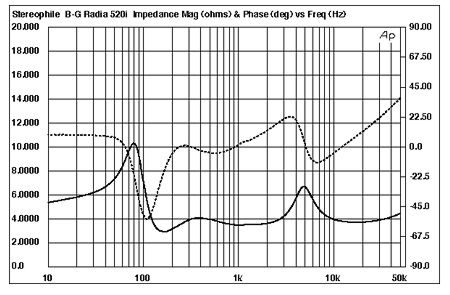
Fig.1 BG Radia 520i, electrical impedance (solid) and phase (dashed). (2 ohms/vertical div.)
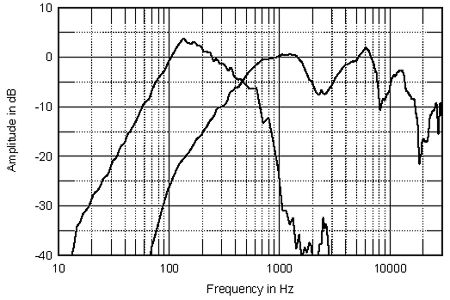
Fig.2 BG Radia 520i, acoustic crossover on center-of-ribbon axis at 50", corrected for microphone response, with the nearfield responses of the woofer and ribbon plotted below 450Hz.
The ribbon unit appears to take over above 400Hz, but its output is marred by roughly equal dips and peaks up to about 15kHz, above which it rolls off steeply. The microphone was placed 50" away from the speaker on an axis level with the midpoint of the 50" drive-unit, and this may well not have been far enough away to properly characterize the behavior of a drive-unit as long as the Radia's ribbon. Even so, the unevenness of the measured response was consistent, and can also be seen in the Radia's response averaged across a 30 degrees horizontal window on the same axis (fig.3). This graph also shows a slight lack of lower-midrange integration between the two drive-units.
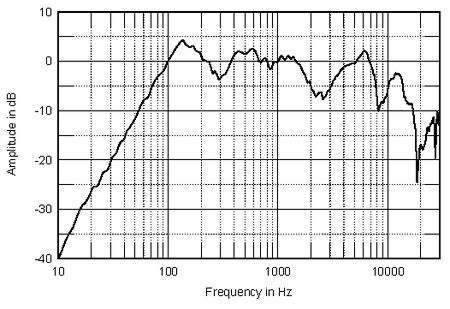
Fig.3 BG Radia 520i, anechoic response on the center-of-ribbon axis at 50", averaged across 30 degrees horizontal window and corrected for microphone response, with the complex sum of the nearfield woofer and ribbon responses, taking into account acoustic phase and distance from the nominal farfield point, plotted below 300Hz.
The ribbon driver has fairly wide horizontal dispersion (fig.4), but this is somewhat uneven with frequency, there being a flare in the treble region where the on-axis response had a lack of energy. In rooms of small to medium size this might well result in a more smooth, even treble balance at the listening chair. But note the sharp drop in output as the microphone approaches 90 degrees off-axis, due to the ribbon's dipole behavior. In the vertical plane (fig.5), the long ribbon acts as a line source, meaning that the balance changes very little with quite large changes in listening axis.
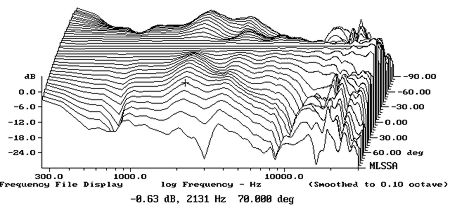
Fig.4 BG Radia 520i, lateral response family at 50", normalized to response on center-of-ribbon axis, from back to front: differences in response 90 degrees-5 degrees off-axis, reference response, differences in response 5 degrees-90 degrees off-axis.
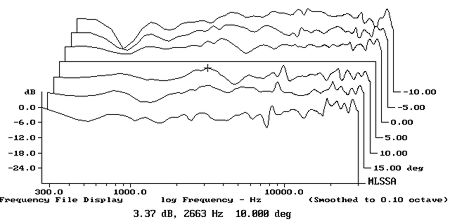
Fig.5 BG Radia 520i, vertical response family at 50", normalized to response on center-of-ribbon axis, from back to front: differences in response 15 degrees-5 degrees above axis, reference response, differences in response 5 degrees-15 degrees below axis.
Turning to the time domain, the Radia 520i's impulse response (fig.6) has a fairly good, time-coherent shape, its tail overlaid with some high-frequency ringing and what might be a close-spaced second arrival. This is also apparent in the step response, where what would have been a good right-triangle shape is disturbed by the second arrival. Both drive-units are connected with the same positive polarity; the positive-going hump in fig.7 results from the tail of the ribbon's step coinciding with the slow rise of the woofers' step.
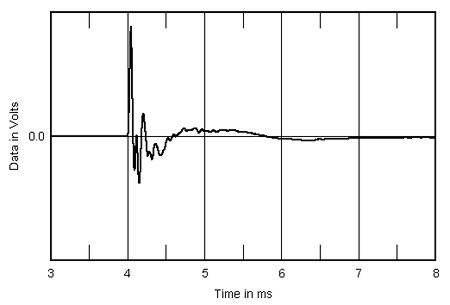
Fig.6 BG Radia 520i, impulse response on center-of-ribbon axis at 50" (5ms time window, 30kHz bandwidth).
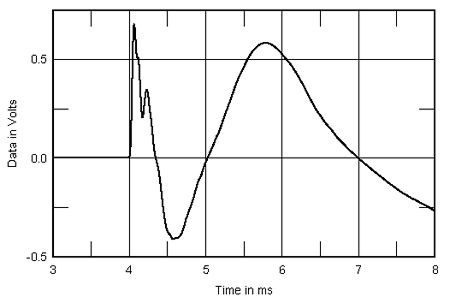
Fig.7 BG Radia 520i, step response on center-of-ribbon axis at 50" (5ms time window, 30kHz bandwidth).
Finally, the Radia 520i's farfield cumulative spectral-decay, or waterfall, plot (fig.8) is not as clean as I would like to have seen, with some delayed energy apparent in the low treble, though this doesn't appear to be due to resonances per se.
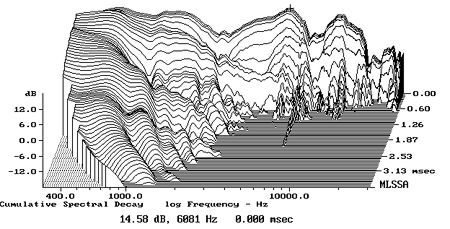
Fig.8 BG Radia 520i, cumulative spectral-decay plot at 50" (0.15ms risetime).
Measuring physically large speakers is always to some extent an exercise in frustration, because the inherent assumption made when a speaker is measured—that the microphone is in the farfield—is no longer correct at all frequencies. It is possible, therefore, that some of the aberrations seen in the Radia 520i's measurements are exaggerated. In which case, the best way to judge the speaker is to listen to it. I note that Larry Greenhill ended up being very impressed by the sound of the Bohlender-Graebener. I will set up the Radia 520i speakers in my own room and report on their sound in a Follow-Up to appear in the January issue.—John Atkinson
- Log in or register to post comments




































